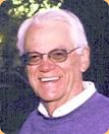


Last Updated: 11/26/2016 05:34
ATTU POST-WWII SCRAPBOOK
Hal Tenney

![The Rec Hall for The "Hitchiti" and other Fleet Tug crews serving tours on Attu. [Hal Tenney]](index_htm_files/224776.jpg)
![The Rec Hall for The "Hitchiti" and other Fleet Tug crews serving tours on Attu. [Hal Tenney]](index_htm_files/237751.jpg)
![The Rec Hall for The "Hitchiti" and other Fleet Tug crews serving tours on Attu. [Hal Tenney]](index_htm_files/237752.jpg)
#1. This is the vehicle we put together with parts
scrounged from around the island. I believe the motor
came from a drone aircraft that had ended up on Attu. The
building in the photo was the "Rec Hall" that the Hitchiti
crew and the crews of other Fleet Tugs that served a tour
on Attu, used to fill their off duty time. Note how great the
weather was on the day I took the photo!
Originally Posted: 02/17/2008
![Our custom-built vehicle used to roam the island wherever there was a passable road. [Hal Tenney]](index_htm_files/224777.jpg)
![Our custom-built vehicle used to roam the island wherever there was a passable road. [Hal Tenney]](index_htm_files/237753.jpg)
![Our custom-built vehicle used to roam the island wherever there was a passable road. [Hal Tenney]](index_htm_files/237754.jpg)
#2. Another photo of the vehicle. We went all over the
island with it . . . anywhere there was a passable road. I am
sorry I cannot remember the names of the occupants, but I
will try to get them and update the photo later. Actually, the
guy in the front passenger seat is me.
![Salmon caught in the gravel pit near the HQ Building. A fish was caught with almost every cast! [Hal Tenney]](index_htm_files/224778.jpg)
![Salmon caught in the gravel pit near the HQ Building. A fish was caught with almost every cast! [Hal Tenney]](index_htm_files/237755.jpg)
![Salmon caught in the gravel pit near the HQ Building. A fish was caught with almost every cast! [Hal Tenney]](index_htm_files/237756.jpg)
#3. These are salmon caught in the gravel pit near the
headquarters building. The pit resulted from excavation of
the gravel to build roads on the island and the fish found it
was an excellent spawning ground. We caught a fish on
almost every cast and our arms ached from pulling in all
those lunkers!

![Several species of sea-run trout caught in Lake Cories and the stream running from the lake to the ocean. [Hal Tenney]](index_htm_files/224780.jpg)
![Several species of sea-run trout caught in Lake Cories and the stream running from the lake to the ocean. [Hal Tenney]](index_htm_files/237757.jpg)
![Several species of sea-run trout caught in Lake Cories and the stream running from the lake to the ocean. [Hal Tenney]](index_htm_files/237758.jpg)
#4. These are several kinds of sea run trout that were
caught in Lake Cories and the stream that runs from the
lake to the ocean. The building in the background was
evidently built by the US troops as protection from the
harsh Attu winters. It had a wood burning stove and some
rough furniture inside. We actually stayed there overnight a
couple of times. Some of the fellows in the picture: second
from the left is Tom Dvorak, the Storekeeper, from Cresco,
Iowa, third from the left is Claude O'Steen, ship's cook,
fourth from the left is Ski Radowicz, Bosun's Mate, and on
the far right is Dalton Trotter, the Radioman, from Dialville Texas who now lives in
Jacksonville, Texas.
I was the Electronics Technician on the USS Hitchiti, ATF-103, which spent
the summer of 1954 on Air/Sea Rescue duty at Attu. We had some great
weather sandwiched in between a bunch of snow in April and October. I was
an avid fisherman and photographer and I spent a lot of time with both
hobbies. Those of us that fished managed to provide the crew with fresh fish
meals on many occasions. While at Attu, I borrowed a copy of "The Capture
of Attu" which was published the the Army as part of The Infantry Journal. It
was great to read a chapter in the book and then go to the described location
on the island and imagine how it must have been during the battle. We could see the tire
track ruts and depressions in the ground from the artillery pieces. There was a lot of spent
and unspent ordinance on the ground since they had not done much to clean up the area.
The hogback ridges were ominous and it was not hard to imagine how devastating those
battles must have been. The Quonset hut village near the runway was in pretty good shape.
There were dishes and silverware on the tables and pinup pictures on the walls. While in the
area, the Hitchiti also served as the tour guide for several US contractors who were bidding
on the salvage rights to the various installations in the Aleutian Island chain. They were
mostly interested in the several wrecked ships in the area for the scrap steel they
represented. We visited all the islands between Attu and Adak that had installations on them
during WW2. This included Shemya, which was temporarily abandoned while we were there.
It subsequently was re-commissioned and was the home for the Cobra Dane Radar. It has
now been re-de-commissioned. We also went ashore on Kiska and several other islands. On
each island, the military had just flown off after the war leaving all the equipment and
vehicles behind. The barracks were even better preserved. It was very eerie spending time on
those islands knowing that no one had been there for eight or nine years. They had parked
trucks and construction equipment on the runways to discourage unauthorized landings. My
time on Attu was one of the best parts of my tour on the Hitchiti. It would be great to go back
for a visit . . . with fishing pole in hand of course!
Here a few photos taken during the tour of duty of the USS Hitchiti, ATF-103 during the
summer of 1954. I hope you and the other former Attu folks find these photos interesting.
Hal Tenney








